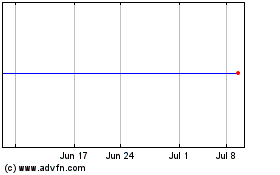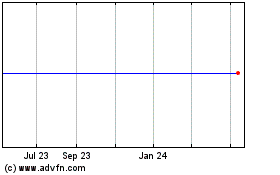Additional Proxy Soliciting Materials (definitive) (defa14a)
May 30 2013 - 5:03PM
Edgar (US Regulatory)
QuickLinks
-- Click here to rapidly navigate through this document
UNITED STATES
SECURITIES AND EXCHANGE COMMISSION
Washington, D.C. 20549
SCHEDULE 14A
Proxy
Statement Pursuant to Section 14(a) of
the Securities Exchange Act of 1934 (Amendment No. )
|
|
|
|
|
Filed by the Registrant
ý
|
Filed by a Party other than the Registrant
o
|
Check the appropriate box:
|
o
|
|
Preliminary Proxy Statement
|
o
|
|
Confidential, for Use of the Commission Only (as permitted by Rule 14a-6(e)(2))
|
o
|
|
Definitive Proxy Statement
|
ý
|
|
Definitive Additional Materials
|
o
|
|
Soliciting Material under §240.14a-12
|
|
|
|
|
|
|
|
DTS, Inc.
|
(Name of Registrant as Specified In Its Charter)
|
|
(Name of Person(s) Filing Proxy Statement, if other than the Registrant)
|
Payment of Filing Fee (Check the appropriate box):
|
ý
|
|
No fee required.
|
o
|
|
Fee computed on table below per Exchange Act Rules 14a-6(i)(1) and 0-11.
|
|
|
|
(1)
|
|
Title of each class of securities to which transaction applies:
|
|
|
|
(2)
|
|
Aggregate number of securities to which transaction applies:
|
|
|
|
(3)
|
|
Per unit price or other underlying value of transaction computed pursuant to Exchange Act Rule 0-11 (set forth the amount on which the filing fee is calculated and state how it was determined):
|
|
|
|
(4)
|
|
Proposed maximum aggregate value of transaction:
|
|
|
|
(5)
|
|
Total fee paid:
|
o
|
|
Fee paid previously with preliminary materials.
|
o
|
|
Check box if any part of the fee is offset as provided by Exchange Act Rule 0-11(a)(2) and identify the filing for which the offsetting fee was paid previously. Identify the previous filing by registration
statement number, or the Form or Schedule and the date of its filing.
|
|
|
(1)
|
|
Amount Previously Paid:
|
|
|
|
(2)
|
|
Form, Schedule or Registration Statement No.:
|
|
|
|
(3)
|
|
Filing Party:
|
|
|
|
(4)
|
|
Date Filed:
|
May 30,
2013
-
Re:
-
DTS'
2013 Annual Meeting of Stockholders—June 6, 2013
Item 4—Advisory (Non-Binding) Vote on Executive Compensation ("Say-on-Pay")
At
the DTS, Inc. (the "Company", "we" or "our") Annual Meeting of Stockholders to be held on June 6, 2013, the Company's stockholders are being asked to vote on an advisory
(non-binding) proposal to approve the compensation of the Company's named executive officers (Item 4 on the Annual Meeting proxy card) (the "Say-on-Pay"
Proposal).
The Company's Board of Directors has unanimously recommended that you vote FOR the Say-on-Pay Proposal.
We are
writing to ask for your support by voting in accordance with the recommendation of our Board of Directors.
Recently,
the proxy advisory firm ISS Proxy Advisory Services ("ISS") issued a report recommending that our stockholders vote against the Say-on-Pay Proposal.
As
summarized below and described further in this supplemental proxy statement filing and in the sections entitled "Executive Compensation and Related Information" (beginning on page 33) and
"Item 4—Advisory (Non-Binding) Vote on Executive Compensation" (beginning on page 22) in the Company's definitive proxy statement filed with the Securities and
Exchange Commission on April 24, 2013 (the "2013 Proxy Statement"), we disagree with ISS' recommendation for the following reasons:
Realizable Pay in Line With Performance.
Our executive compensation program is structured with the objective of having actual (or
"realizable") compensation that, over-time, reflects our strategic execution and tracks with our financial and stock price performance. As described more fully in the 2013 Proxy Statement,
and as shown in the graph below, consistent with this structure and our recent financial and stock price performance, our Chief Executive Officer's realizable compensation was just 33% of his 2012
target total direct compensation opportunity—and just 16% of his 2011 target total direct compensation opportunity.
CEO Pay For Performance

Approach to Pay for Performance Comparisons.
-
•
-
Selected Comparison
Companies
. The peer group ISS used to measure the relative alignment of the Company's Total Shareholder Return ("TSR") performance with the
ranking of our Chief Executive Officer's total compensation is not representative of the competitive market for the Company. For example, 50% of the "ISS-Selected Peers" have current
market capitalizations as
1
of
May 29, 2013 of less than $100 million (calculation excludes five "Shared Peers" and one ISS peer that has been acquired). Our market capitalization as of May 29, 2013 of
approximately $372 million was more than 3.7 times the market capitalizations of each of these companies that were used by ISS in its analysis.
-
•
-
Reliance on Grant date Values of Equity
Awards
. The heavy reliance on the grant date value of equity awards under ISS' methodology is misleading and overvalues the compensation of our
named executive officers, including our Chief Executive Officer. While ISS asserts that there is a misalignment between our executive compensation and our performance, ISS' approach fails to recognize
that the value to our executives of our performance-based long-term incentives is lower when TSR is lower. Additionally, and as described more fully below, the ISS approach uses a grant
date value that is approximately $815,000 higher than the accounting cost of our Chief Executive Officer's stock option grant.
-
•
-
Penalty for Emphasizing Stock
Options
. ISS' approach to calculating Chief Executive Officer pay significantly penalizes our Company for using stock options, a compensation
vehicle which we feel strongly aligns the interests of our executives with those of our stockholders. Because we emphasize shareholder alignment, we have historically delivered a larger portion of our
Chief Executive Officer's (and other named executive officer's) long-term incentive award opportunities in the form of stock options compared to many other companies (~70% of our Chief
Executive Officer's 2012 long-term incentive award opportunity and 100% of the 2013 opportunity was in the form of stock options). As a result, ISS' approach to evaluating stock options in
its pay for performance methodology disproportionately impacts our Company. Specifically:
-
•
-
We believe ISS' stock option valuation model significantly inflates the value of stock options. ISS attached a target
value to our Chief Executive Officer's stock option award that was approximately $815,000 higher than the actual accounting value of the grant as reported in our summary compensation table. This
award, which was made in February of 2012, was underwater as of the end of our fiscal year and had no realizable value to our Chief Executive Officer, as shown in the table below:
|
|
|
|
|
|
|
|
|
|
Item
|
|
Option
Value
|
|
% of
Accounting
Value
|
|
|
Accounting Value (as reported in the Summary Compensation Table)
|
|
$
|
2,167,329
|
|
|
100
|
%
|
|
ISS "Pay for Performance" Value
|
|
$
|
2,982,000
|
|
|
138
|
%
|
|
"In-the-Money" or Realizable Value at Fiscal Year End
|
|
$
|
—
|
|
|
0
|
%
|
-
•
-
Additionally, ISS did not consider our stock option grants, which only have value to the executive if the stock price
appreciates and shareholder value is created, to be performance-based compensation in its evaluation of our program.
-
•
-
Timing of our Pay
Decisions
. The ISS analysis fails to adequately take into account the timing of our executive pay decisions. In accordance with our equity grant
policy, these decisions occur in the first quarter of our fiscal year, when our total stockholder return for the year is undetermined. This is a key reason why our Compensation Committee feels
reviewing realizable pay and Company performance at the end of the fiscal year is important in its evaluation of the program in general and when setting pay for the following year. Unfortunately, the
ISS analysis did not appear to give fair consideration to the timing of our 2012 equity awards or to the significant changes to the program introduced in early 2013 as described below.
2
2013 Compensation Adjustments.
During 2012, we successfully achieved a number of strategic business objectives despite an environment
characterized by substantial global economic uncertainty and widespread deterioration in many segments of the consumer electronics market.
Despite
these accomplishments in a difficult economic environment, in setting target pay levels for 2013, the Compensation Committee was mindful of the decline in our stock price over the past two
years and that our financial performance fell short of our expectations, and took the following actions to revise the Company's executive compensation program and to further enhance the alignment of
the program with the interests of the Company's stockholders:
-
•
-
Provided no increases to named executive officer (NEO) base salaries;
-
•
-
Eliminated restricted stock unit grants for NEOs in favor of a 100% stock options approach (furthering our
pay-for-performance philosophy); and
-
•
-
Provided significant reductions in award values (average reduction for our NEOs of 60%).
Consequently,
the target total direct compensation opportunity of our Chief Executive Officer for 2013 is approximately 47% lower than his target total direct compensation opportunity for 2012. In the
case of the other named executive officers, their target total direct compensation opportunities for 2013 are approximately 37% lower that their target total direct compensation opportunities for
2012.
Conclusion
The
Company's management and Board of Directors are committed to providing its executive officers with compensation opportunities that are tied to Company performance and stockholder value creation.
For
the reasons set forth above, and in further detail in the 2013 Proxy Statement, the Company's Board of Directors requests that our stockholders reject the recommendation contained in the ISS
report and that they vote
FOR
the proposal to approve the compensation of the Company's named executive officers.
If
you would like to speak with us about Item 4, or any of the proposals in the 2013 Proxy Statement, please contact Melvin L. Flanigan, Executive Vice President, Finance and Chief
Financial Officer, at (818) 436-1045.
3
QuickLinks
CEO Pay For Performance
Dts, Inc. (NASDAQ:DTSI)
Historical Stock Chart
From Jun 2024 to Jul 2024

Dts, Inc. (NASDAQ:DTSI)
Historical Stock Chart
From Jul 2023 to Jul 2024
